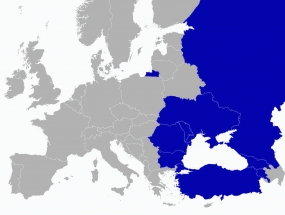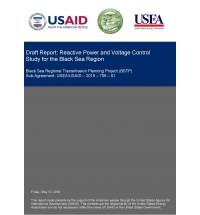Black Sea Regional Transmission System Planning Project (BSTP): Reactive Power and Voltage Control Study for BSTP Region; BSTP Models Update; BSTP Reactive Power Workshop; System Adequacy Study
client: USEA, USAID
type: Study
finishing date: December 2018 (March 2019)
team: Dragana Orlic – Project leader, M. Ivanovic - Project leader, Dj. Dobrijevic, M. Stojanovic
Whole project consists of three parts with the following objectives:
Reactive Power and Voltage Control Study:
- Analysis of the capabilities for reactive power and voltage control of the BSTP power systems.
- The Study is conducted from the transmission network point of view when taking into account the future status of power systems development (2025) and the following three characteristic critical regimes: winter max, summer max and summer min.
- The proposed solutions define globally while considering a regional approach, including an estimation of the minimum necessary amount of the compensating devices that can be installed in certain locations.
- The analyses encompasses a rough cost overview of the necessary equipment, but without detailed market value analysis and specific detailed implementation solutions.
BSTP Reactive Power Workshop with BSTP Models Update:
- Program of the workshop is designed to improve the capacity of BSTP network planners to model and analyse reactive power and voltage control devices within the regional context. It was focused on steady state simulation analyses which should be supported by regional BSTP PSS/E planning models for 2020 and 2025 (winter max, summer max and summer min regimes).
- In addition to the workshop, BSTP Working Group continues to maintain and update the 2020 intermediate near-term and 2025 long-term load flow, optimal power flow, dynamic stability, short circuit regional electricity transmission models.
System Adequacy Study:
- Improves the capacity of TSOs to understand the constraints in power system operation which can be assessed through two different approaches: deterministic and probabilistic. In this first phase (with the deterministic approach), the supply/demand balance is checked on the basis of a selected individual hour in each month of the target year (e.g. 2025) and one climatic year. The following are the main objectives of the study:
- Assessment of the risk to security of supply at the national/regional level and needs for flexibility over the next period (encompassing high penetration of RES sources and closing of the old thermal units);
- Highlighting the contribution of interconnectors to national adequacy;
- Determination of signals to both market-players and decision makers of the need for generation fleets to evolve, and;
- Regional considerations that can be used for additional national studies
Type of services provided:
- Data collection and analyses
- Methodologies for reactive power and voltage control assessment
- Methodologies for system adequacy assessments including discussion of necessary input data, proxies and assumptions
- System adequacy data base building
- System adequacy deterministic analysis
- Steady state analysis and model testing
- Regular updates of regional models for load flow, short circuit calculation, OPF and dynamic analyses


